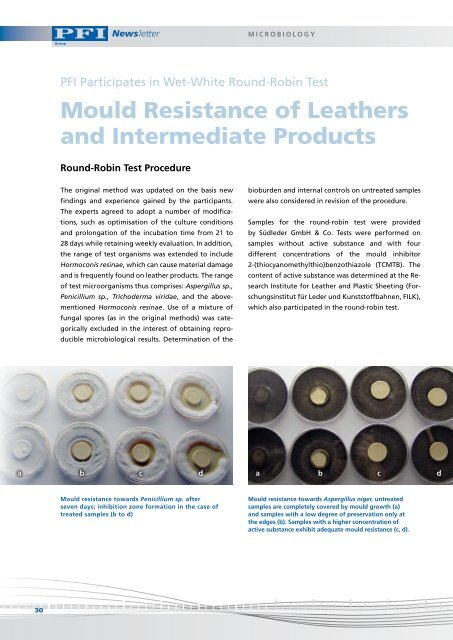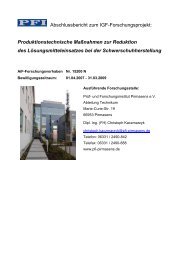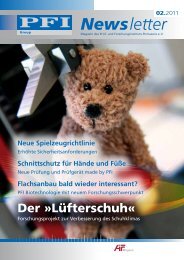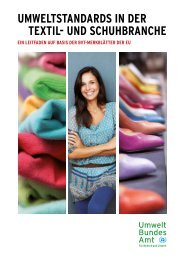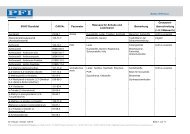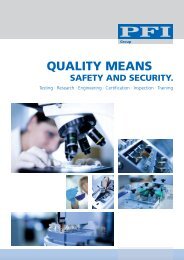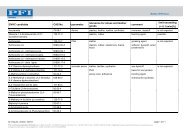Here - PFI Group
Here - PFI Group
Here - PFI Group
Create successful ePaper yourself
Turn your PDF publications into a flip-book with our unique Google optimized e-Paper software.
30<br />
Newsletter<br />
<strong>PFI</strong> Participates in Wet-White Round-Robin Test<br />
Mould Resistance of Leathers<br />
and Intermediate Products<br />
Round-Robin Test Procedure<br />
The original method was updated on the basis new<br />
findings and experience gained by the participants.<br />
The experts agreed to adopt a number of modifications,<br />
such as optimisation of the culture conditions<br />
and prolongation of the incubation time from 21 to<br />
28 days while retaining weekly evaluation. In addition,<br />
the range of test organisms was extended to include<br />
Hormoconis resinae, which can cause material damage<br />
and is frequently found on leather products. The range<br />
of test microorganisms thus comprises: Aspergillus sp.,<br />
Penicillium sp., Trichoderma viridae, and the abovementioned<br />
Hormoconis resinae. Use of a mixture of<br />
fungal spores (as in the original methods) was categorically<br />
excluded in the interest of obtaining reproducible<br />
microbiological results. Determination of the<br />
Mould resistance towards Penicillium sp. after<br />
seven days; inhibition zone formation in the case of<br />
treated samples (b to d)<br />
MICRoBIoLoGY<br />
bioburden and internal controls on untreated samples<br />
were also considered in revision of the procedure.<br />
Samples for the round-robin test were provided<br />
by Südleder GmbH & Co. Tests were performed on<br />
samples without active substance and with four<br />
different concentrations of the mould inhibitor<br />
2-(thiocyanomethylthio)benzothiazole (TCMTB). The<br />
content of active substance was determined at the Research<br />
Institute for Leather and Plastic Sheeting (Forschungsinstitut<br />
für Leder und Kunststoffbahnen, FILK),<br />
which also participated in the round-robin test.<br />
a b c d a b c d<br />
Mould resistance towards Aspergillus niger, untreated<br />
samples are completely covered by mould growth (a)<br />
and samples with a low degree of preservation only at<br />
the edges (b). Samples with a higher concentration of<br />
active substance exhibit adequate mould resistance (c, d).


